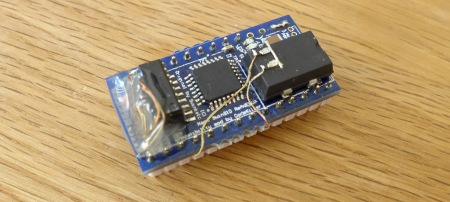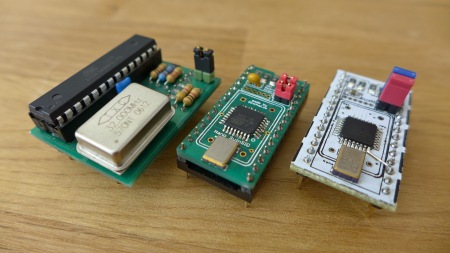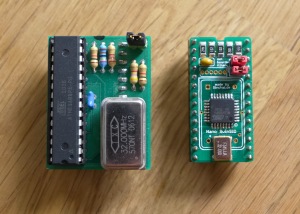
I’ve covered SwinSID micro and nano few times before. It’s a great idea – a micro controller based SID chip replacement, working as a spare part for a C64 or C128, or as a substitute to some other application like a DIY-synth. For Commodores, it’s especially suited for a gaming machine, as only very few games feature such tricks that would not sound about right on the SwinSID.
However, there’s this downside with the SwinSID that it does not support analog controllers. This is because it’s the SID chip that handles the reading of analog controllers in the C64, and the A/D converters are not implemented in the SwinSID. The number of games supporting paddles, mice or analog joysticks is not that big, but still it’s a shame that they won’t work with SwinSID. Also the few games that support second joystick button are affected. They behave as if the second button would be triggered constantly.
So there is a lack of fully featured replacement for a SID chip. This is a shame as SID chips are sought after, and supply for good and working chips is getting more and more scarce. The demand of SID chips have been recognized, as it’s not that difficult to find a supply of SID chips from Asia. It’s just that many have found out that these chips are often dead, faulty or downright fakes, and often rebadged.
Knowing that there are a lot of these faulty SID chips with bad filters or missing sound channels, it had occurred to me that maybe these could be combined together with SwinSID to make at least a fully featured replacement for the SID chip. Sound from the SwinSID, and A/D converters from an otherwise faulty SID.
Recently I ordered some spare parts from Mutant Caterpillar Games, who have a selection of chips for 8-bit computers in stock, including SID chips. As we were talking together with Ian Gledhill about SID sourcing challenges among other things I mentioned this idea of mine. He kindly sent me few faulty rebadged SID chips to test it out.
So, off I am to build an adapter that allows me to install SwinSID and a ‘badSID’ to the C64. Read the rest of this entry »




 Posted by ilesj
Posted by ilesj 




